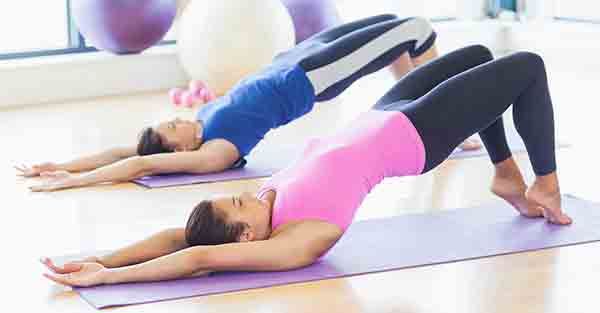
What is Pilates?
By Dr. Julie Millar, PT, DPT | Therapydia Denver & Therapydia Cherry Creek
When Joseph Pilates (creator of Pilates, originally known as Contrology) was approximately 35 years old, he was interned by the British government on the Isle of Man. He was in no way associated with the Nazi party at this time during World War I, but since he was a German national, this is where the British decided he would be during the time of uncertainty. It was here that Mr. Pilates developed group fitness classes centered around his trademark movements and exercises to keep himself and other interns healthy. While he was interned, one of the greatest pandemics of all time, the Spanish flu of 1918, struck around the world. The Spanish flu took the lives of thousands of people in the region and tens of millions worldwide, however, it did not touch any of those who had become dedicated to Pilates fitness on the island.
In the healthcare world, it is well-established that exercise is vital in preventing and minimizing the effects of various diseases that affect our physical and mental wellbeing. But what is it about Pilates exercise specifically that provides a form of health protection? One of the main principles of Pilates is proper breathing. You may think that breathing is breathing, so what about it? In our modern world of tablets, computers, and excessive sitting, we have slowly been squashing our diaphragm-our main breathing muscle. Our spine and ribcage also adapt to this posture and further compress our lungs and chest, leading to a cascade of other issues. Breathing is more than just taking air in and blowing it out; it’s about utilizing our whole lung and breathing system to full capacity in order to support our heart, brain, muscles, digestion, and genitourinary system. It is also about supporting our “core” structure to keep our back, neck, hips, and shoulders operating effectively.
Try this: Sit slumped poorly in a chair and place a hand on your chest and a hand on your belly. Breathe in deeply through your nose-notice what happens. What part moves: your chest? Your ribs? Your tummy? How much movement is there? Now sit as tall as you can on your sit bones and imagine there is a balloon inside your belly. As you take air in through your nose, pretend you are inflating the balloon in your belly, low back, and lower ribcage as big as you can. Stay tall and breathe out, gently pressing air out of the balloon from all sides. You should have felt greater expansion of your low ribs and stomach, and less chest and shoulder breathing with the second version.
Pilates will enhance your movement and exercise performance by helping you use your diaphragm core muscle to support your movement and oxygenate your body as it builds new muscle and neural connections. It will also keep you from building too much pressure in your back, neck, and pelvic floor during exercise, thereby preventing injury.
Pilates is an excellent form of exercise to challenge any level of skill and age. Properly trained Pilates instructors have several hundred hours of didactic and practical training, in addition to student teaching hours. Under the right instruction, it is safe and effective to use Pilates for injury rehabilitation, pre and post-natal care, post-surgical care, and sports performance enhancement. With the added skill set of a physical therapist also trained in Pilates, you are in even better hands.
Please follow this series of blogs by Dr. Julie Millar, PT, DPT, physical therapist and Pilates instructor. Julie is now offering private one to one Pilates lessons at Therapydia Cherry Creek. Please call our main office to schedule today.